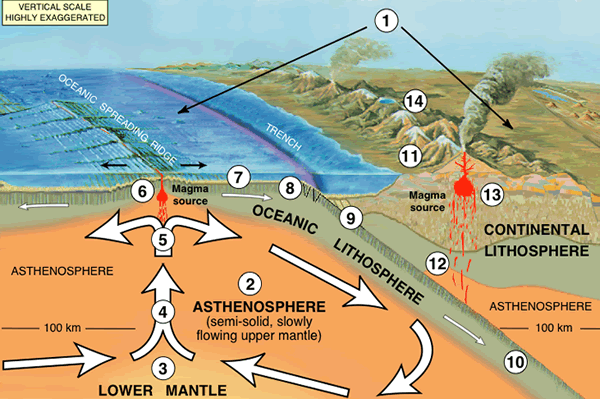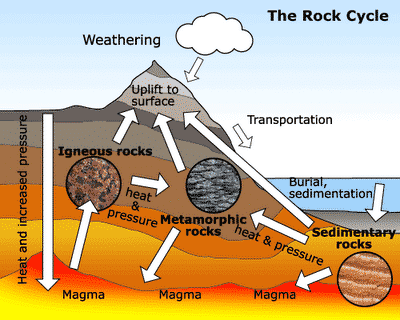- Geology (study of Earth) is important for energy and natural resources, solving environmental problems, building cities and highways, predicting and protecting against natural disasters like earthquakes, volcanic eruptions, landslides, floods
Uniformitarianism: fundamental principle “the present is the key to the past”
How long? geologic time is measured in billions of years
- Where and How? After the Big Bang (~15 billion years ago) Earth may have formed by the nebular hypothesis: ~5 billion years ago a solar nebula of hydrogen and helium gravitationally contracted into a rotating disc with our Sun at the centre, and the planets and moons revolving around it
- Within the disc, Earth evolved through many collisions of rocky and metallic fragments into a rocky sphere divided into a dense core, large mantle, and lighter crust
Plate Tectonics:
- The crust and uppermost mantle eventually split into rigid plates of Lithosphere (sphere of rock) that move over Earth’s surface above the soft, convecting
- Asthenosphere (weak sphere) by Continental Drift, based on…fit of the continents –e.g. South America, Africa and other continents fit well together at 900 m depth which coincides with the edge of their continental shelves fossil evidence – same type and age found on continents separated by ocean basins rock types and structural similarities – match when continents are fit back together paleo climates – evidence of ancient glaciations in warm areas of today – show the pattern of a single ice sheet if continents are refitted back together; also, ancient coal fields that formed in tropical swamps now occur in areas of cold climate
- Most geologic activity (e.g. earthquakes, volcanoes) occurs at plate boundaries; especially at convergent boundaries where denser oceanic lithosphere descends beneath lighter continental lithosphere; at depth it melts to produce magma which rises to the surface and erupts as volcanoes which in turn are eventually eroded and the sediment carried by streams to the ocean again
Earth System and Rock Cycle:
- Earth is a dynamic planet (system) of interacting hydrosphere, atmosphere, biosphere, and geosphere (solid earth); matter (molecules) is recycled with changing conditions of depth (pressure), temperature, and rock type within Earth’s crust (e.g. convergent boundaries)
- The rock cycle and plate tectonics together produce many different types of rocks that are made up of different minerals that we will study in detail next class


